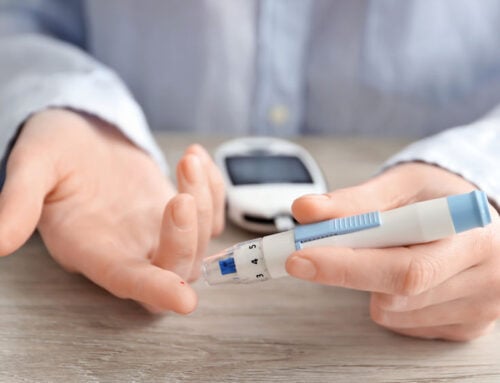Managing Painful Diabetic Neuropathy
In the United States, approximately 1 in every 10 people has diabetes. Complications of the disease can include an increased risk of cardiovascular disease, kidney damage, eye problems, foot damage, and nerve damage. More commonly known as diabetic neuropathy, symptoms of nerve damage can range from minor pain and numbness to more severe problems with the digestive system, urinary tract, blood vessels, and heart. Diabetic neuropathy affects 50% of people with diabetes, so knowing how to manage the side effects is essential.

What’s your type?
Before diving into the proper management of diabetic neuropathy, patients should understand the difference between the 4 types of nerve damage. Peripheral nerve damage is the most common, affecting the hands, feet, legs, and arms. Often described as a pins and needles sensation, peripheral nerve damage can cause pain and increased sensitivity. Autonomic nerve damage most commonly affects the bladder, heart, sex organs, stomach, intestines, and eyes. Proximal nerve damage affects nerves in the thighs, buttocks, hips, legs, chest, and stomach. Severe pain and trouble getting up from a seated position are cardinal symptoms. Lastly, focal nerve damage typically affects single nerves in the torso, hand, head, or leg.
1. Slow progression with blood sugar control
Diabetic neuropathy has no cure, so slowing the progression of this complication is important. The best way to do so is to keep blood sugar in a target range. The exact number will vary slightly based on age, how long a person has had diabetes, and any underlying health conditions. Frequent blood sugar readings are the best way to keep track of results.
2. Aim for a healthy lifestyle
Maintaining a healthy weight, keeping blood pressure (BP) under control, and getting regular physical activity can all add up to prevent the development of neuropathy or slow progression. Like the general population, people with diabetes should aim for 150 minutes of moderate-intensity exercise each week. If tingling in the extremities interferes with working out, consult a healthcare provider to determine how to exercise safely. A diet rich in nutrients and low in fat can help keep BP and weight in check. Aim for plenty of fruits, vegetables, and whole grains.
3. Pain management
Plain and simple, diabetic neuropathy can be painful. Although over-the-counter (OTC) pain relievers can be used, in many cases, a stronger prescription is necessary. Anti-seizure drugs are commonly used to treat diabetic nerve pain. Certain antidepressants can also help, but remember that these drugs have possible side effects. Although not as well studied, some people report relief from natural supplements, such as alpha-lipoic acid (ALA), B12, and acetyl-L-carnitine.
4. Take care of the feet
In many cases, diabetic neuropathy is experienced as pain or numbness in the feet. When the feet are numb, small injuries cannot be felt, which can lead to more severe problems if not addressed. Get into the habit of checking the feet daily and wearing good closed-toe shoes.
Reduce neuropathy pain
Diabetes nerve pain is an unfortunate side effect of the disease. However, there are a few ways this pain can be managed. Aiming for optimal blood sugar, maintaining a healthy diet, working out, taking pain medications, and being aware of the feet are all important tips to keep in mind for lowering pain levels. Reduce neuropathy pain and restore a better quality of life.




